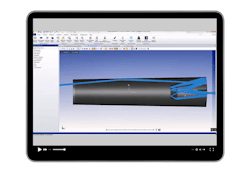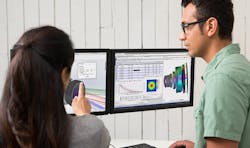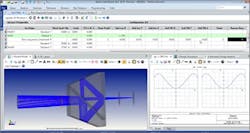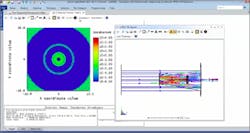Virtual prototyping is about validating a design before creating a physical prototype, and it’s the standard today for optical product development as it can make or break a product’s success. But not all virtual prototyping is created equal. While an optical engineer may be interested in just the lens and the mechanical engineer may be interested in just the mechanical components, in order to incur real cost and timeline savings, virtual prototyping must be viewed holistically as being about the lens and the mechanical components. Companies that are using modern virtual prototyping in this way are seeing huge savings in product development time.
Virtual prototyping is not a new concept. “Decades ago, anyone with a drafting board, some simple math and a slide rule could draw up an optical design and technically, that was a virtual prototype,” says Dan Hamann, Zemax Chief Revenue Officer. “But in the last six years, there's been a sea change in what is expected from a virtual prototype in all industries. Those companies that are up to date in virtual prototyping are more competitive and are seeing massive benefits over those that are not.”
Challenges companies face bringing optical designs to market
No matter what type of product a company is designing, from virtual reality headsets to cell phone cameras to biomedical imaging devices to heads-up displays, a major concern is time to market. The cost of the product is contingent upon getting to market on time in hyper-competitive industries. So, companies face tight schedules with a “must be right the first time” mandate and the competition breathing down their necks.
How modern virtual prototyping addresses these challenges
Virtual prototyping helps companies get to market faster because it lets companies conduct simulations to catch and correct errors earlier in the process and arrive at a high-confidence physical prototype, so they won’t get stuck in the product development cycle and burn through manpower hours and budgets. But many software providers that claim to do virtual prototyping aren’t offering a complete package: They virtually prototype the lens system only.
Zemax Virtual Prototyping is the only software that lets you simulate the entire optical product. That includes the optics side and mechanical components—and seeing how it all works together. Getting this view of the entire product lowers the number of failed physical prototypes, with their one-off custom-built parts that are very expensive to produce.
Companies that are using the most modern virtual prototyping solutions are the ones that are most successful, most profitable, and serving their customers the best. They're the ones that get to market faster. They're the ones that make sure that their products are offered at a reasonable cost that their customers will pay. “If you’re not virtually prototyping the entire product, both optical and mechanical, then you’re not up to date,” says Hamann. “And you do have to worry about whether your competitors are doing that are not—whether they will get to market faster or not as a result.”
New webinar: Creating a Zemax Virtual Prototype with OpticStudio and LensMechanix
Soon, virtual prototyping will be as commonplace as using optimization tools to get optical products to market faster and with greater confidence. Zemax Virtual Prototyping is the only solution to create a virtual prototype of the entire optomechanical product—not just the optical or mechanical components alone. Learn how it works.



